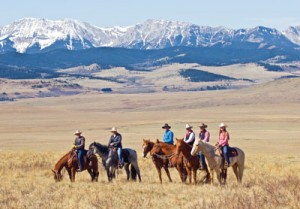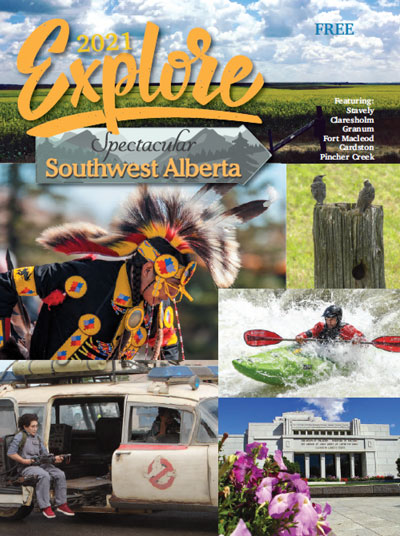The Nature Conservancy of Canada (NCC) has assisted the Waldron Grazing Co-operative in adding the very historic King Ranch to the largest conservation easement in Canadian history.
With the acquisition of the ranch, the existing 12,357 hectare (30,535-acre) Waldron conservation project, a conservation easement secured by NCC in 2014, has grown by an additional 1,701 hectares (4,205 acres).
“The King Ranch has been sold twice since the brothers passed away in the 1990s,” Nature Conservancy of Canada associate regional vice-president Larry Simpson said. “Each time it was sold, there was the potential someone would buy the property and cultivate the fescue grasslands or allow country residential homes to be built on the property.”
“With the Waldron Grazing Co-op being the new owners has come a commitment to keep the land healthy and intact by virtue of the conservation easement they have placed on the land. The Waldron shareholders’ decision to conserve this magnificent property is good: good for the cattle, the wildlife, our water, and the people who can drive down the Cowboy Trail and enjoy the raw beauty of the area.”
The King Ranch is along the Cowboy Trail (Highway 22) in the wildlife corridor linking the 28,000-hectare (70,000-acre) Bob Creek Wildland Park (the Whaleback) and the 39,000-hectare (97,000-acre) Porcupine Hills Forest Reserve and in close proximity to other properties with conservation easements, including the Waldron Ranch.
“The purpose of the grazing co-op at its inception in 1962 was to provide more grass to benefit shareholders’ existing ranches,” Waldron Grazing Co-op chairman Gerald Vandervalk said.
“Our founders would be proud of the way the Waldron is protecting the watershed and utilizing better grazing practices. Future generations will benefit from utilizing the increase of acreage with more opportunities for responsible environmental stewardship.”
Waldron Grazing Co-operative has purchased the property, which was formerly owned by the eccentric multimillionaire King brothers, two men that helped shape ranching in southern Alberta.
Numerous stories have been written chronicling the legend of the two brothers — Harrold and Maurice — who bought the land in the 1920s and lived together as perpetual bachelors in the same log cabin on some of Alberta’s most valuable land.
By the time the brothers died in the 1990s the ranch was worth millions, but Harrold and Maurice lived frugally without electricity in self-imposed isolation for the better part of a century.
They were known to wear old pants held up by twine, choosing to invest every penny into their beloved ranch.
NCC’s conservation easement on this significant stretch of working native grassland prevents further development in the area and will assist in the conservation of water quality, flood mitigation, and the maintenance of important watershed along Alberta’s southern foothills.
It is also a wildlife corridor that facilitates the movement of large carnivores such as bears and cougars.
Other species this property supports include elk, mule deer, golden eagles, bald eagles, and moose.
The King Ranch is also home to the ferruginous hawk, which is on Alberta Species at Risk’s threatened list.
The property is also habitat for the endangered Limber pine, a five-needled pine that can live up to 1,000 years and whose seeds provide important food for bears, small mammals, and birds.
The federal government provided $1.5 million through Environment and Climate Change Canada via it’s Natural Areas Conservation Program.
“The government of Canada is pleased to work with the Nature Conservancy of Canada to protect this important grassland habitat and continue the King brothers’ legacy,” federal Environment Minister Catherine McKenna said. “Through the Natural Areas Conservation Program and the Ecological Gifts Program, our government supports initiatives that encourage private land owners who want to protect ecologically sensitive lands in Canada.”






